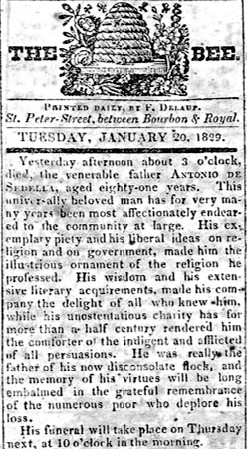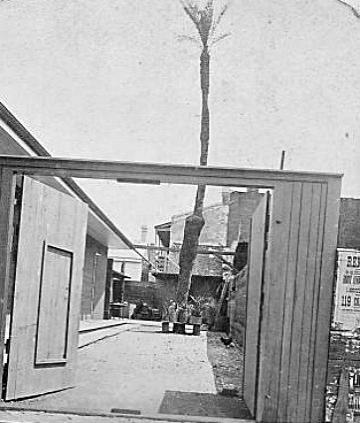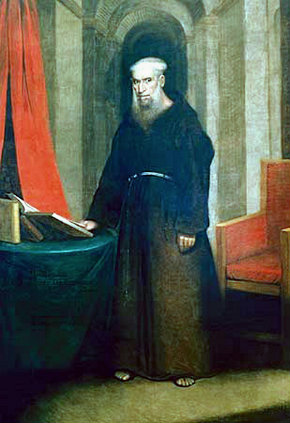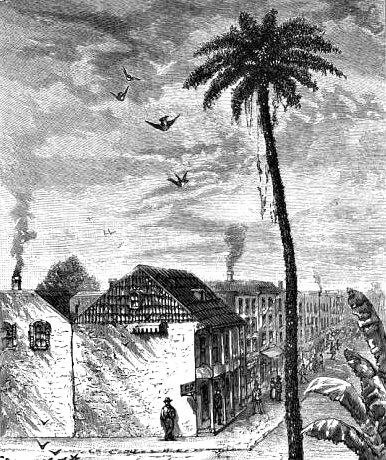| Pere Antoine's Date Palm |

| The link to this page is: http://old-new-orleans.com/NO_Pere_Antoine.html Back to Old New Orleans Whispers - Home |

| Antonio de Sedella, known as Pere Antoine, was a Capuchin friar who was pastor of St. Louis Church (later Cathedral), beginning in the late 1770's. He was called back to Spain not long after his arrival, but returned in a few years and remained rector until his death in 1829. |













| In the beginning, the Spanish priest's rigid ideology didn't sit well with the French population of New Orleans. But, that changed over the years and, by the time of his death, his dedicated, self-sacrificing service had turned him into a most beloved figure. |
| Stories concerning Pere Antoine's selfless altruism were legend even during his lifetime and it was assumed by his parishioners that sainthood would follow. So strong was this belief that, within days of his death, nothing remained of the little hut behind the Church in which he lived - so many had taken pieces of it to save as relics. |
| Even now, Pere Antoine isn't forgotten. In fact, many say he isn't gone. Through the years, there have been - and continue to be - countless ghostly sightings of a little friar in black Capuchin robe: praying in the Church, sitting in the garden where his hut once stood and walking in St. Anthony's Alley, which was named in his honor. |
| Pere Antoine, 1822 |
| Sketch of Pere Antoine's date palm, 1885 |

| One of the most intriguing stories surrounding Pere Antoine concerns the palm tree that grew next to his hut. Some say he planted it, others say that it sprang from the ground over the grave of someone he loved. Many people believed it had miraculous healing properties. |
| How it came to be - and how it ultimately met its end - may never be known, but one thing seems clear: The date palm was important to Pere Antoine. He nurtured it during his life and attempted to make provisions for it after his death by requesting that it never be destroyed. |
| The image above is supposedly a photo of Pere Antoine's palm tree, taken in the early 1900's. But, the tree is known to have grown next to his hut and his hut was located in what is now St. Anthony's Garden, behind the Cathedral, which clearly isn't the place shown here. However, this may have been an offspring of the famous tree. |
| Pere Antoine's Obituary, The Bee, January 20, 1829: |
| Here's something to think about: It's said that Pere Antoine gave seeds from the tree to many people. If you live in New Orleans, and you have an ancient palm tree growing in your yard, who's to say that it isn't a descendant of Pere Antoine's beloved date palm? -- Nancy |







| "Yesterday afternoon about 3 o'clock, died, the venerable father Antonio de Sedella, aged eighty-one years. This universally beloved man has for very many years been most affectionately endeared to the community. |
| "His exemplary piety and his liberal ideas on religion and on government, made him the illustrious ornament of the religion he professed. His wisdom and his extensive literary acquirements made his company the delight of all who knew him, while his unostentatious charity has for |
| more than half a century rendered him the comforter of the indigent and afflicted of all persuasions. He was really the father of his now disconsolate flock, and the memory of his virtues will be long embalmed in the grateful remembrance of the numerous poor who deplore his loss." |

